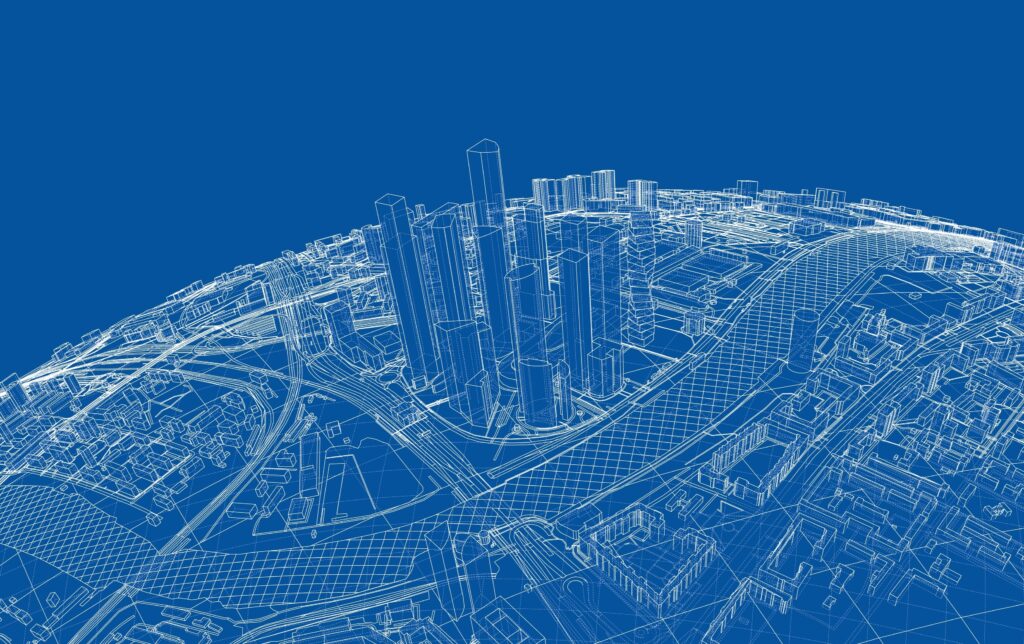Observers generally consider location intelligence in the context of latitude and longitude, placing a handset’s position on the surface of a globe or 2D map. To locate and track a vehicle or subject in open terrain, that information is generally sufficient, because even in a complex natural landscape, the handset can typically be assumed to be at ground level. That assumption becomes unsound, however, in dense urban locations where multi-level parking garages or high-rise buildings are prevalent.
Vertical position data is critical to locating subjects in such urban contexts. For emergency services, knowing which floor of a building to respond to in advance can easily save critical minutes compared to manually searching. Likewise, accurate investigation by law-enforcement agencies (LEAs) may require knowing which floors subjects are located on, such as to determine patterns of life based on meetings. In 5G networks, vertical position can be determined by a variety of techniques based on handset-based or network-based approaches, and capturing that information is an emerging imperative for comprehensive location intelligence.
Meeting Technical and Regulatory Requirements for Vertical Location
Globally, regulatory frameworks are moving toward requiring mobile network operators (MNOs) to provide vertical location information to public safety answering points (PSAPs). In the US, for example, the Federal Communications Commission (FCC) requires all nationwide MNOs to deploy dispatchable location or z-axis technology throughout their service areas by April 2025. Non-nationwide MNOs must do the same by April 2026. For the purposes of this requirement, “dispatchable location” refers to providing the PSAP with the validated street address of the emergency caller and the relevant suite, apartment number, or similar information (which requires vertical location data).
Mandates for stricter mobile emergency location requirements are likewise emerging in the EU and other jurisdictions, as the network and handset technologies to support them advances. “Z-axis technology” as referred to in the FCC regulation must deliver vertical accuracy of plus or minus three meters for 80% of the population or 80% of the buildings that exceed three stories. Where possible, this information must include floor-level information. The corresponding accuracy requirement for horizontal (x/y) location is within 50 meters for 80% of emergency calls.
The FCC requires z-axis location data to be delivered to the PSAP as Height Above Ellipsoid (HAE), where “ellipsoid” refers to a standardized mathematical reference model of the Earth that smooths out geographical features to approximate its overall shape at sea level. HAE is the same measurement that is typically provided by GPS.
Calculating a Caller’s Vertical Location in a Building Using HAE
At the PSAP, HAE data provided by the communication service provider (CSP) is not directly usable. For responders to use this z-axis information to find emergency callers, they must translate the abstract HAE measurement into physical location information such as a floor number. Note that the smoothed out ellipsoid model does not correspond to true sea level, which varies by time and place because of tides, wind, gravitation, and other factors. Moreover, geographical features such as hills make “ground level” vary at different x/y locations, relative to the ellipsoid.
The relationship between HAE and the vertical location of an emergency caller’s handset can be determined using a global reference model of sea level heights (known as the “geoid”) at any precise latitude/longitude location. Subtracting the geoid height at the caller’s x/y location from the calculated HAE provides their “orthometric height,” or the distance above or below their location-specific sea level. That information can then be projected onto a 3D map of buildings and other features in an area that includes vertical information such as the height of each floor of every building to identify where ground level is, and accordingly, what floor the caller is on.
Practical Implementation of Vertical Location for Emergency Responders
Beyond regulatory mandates, identifying the vertical location of handsets is vital to taking full advantage of 5G networks, for both emergency response and law enforcement, as well as for commercial purposes. As authorities worldwide set requirements for MNOs to deliver increasingly accurate and comprehensive location data in all three dimensions, all those types of end users need to implement solutions to consume it and advance their respective missions.
Implementing 3D location intelligence based on HAE data requires sourcing 3D maps from providers who update them continually to ensure accurate results. The SS8 lawful intelligence platform can ingest and integrate those maps into its visualization tool and calculate vertical location information along with the handset’s latitude and longitude. The visualization therefore transforms the vertical-axis information from the format that MNOs are required to deliver it, into a human-usable form that is intuitive for PSAP operators, investigators, and others. That translation provides a three-dimensional description of the handset’s position in space, which is instrumental to comprehensive location of subjects, across use cases.
About Michael Gebretsadik
 Michael has worked in the telecommunication industry for the better part of two decades, in roles ranging from engineering to product management, and business development. He has been involved with location technology since 2003, when he joined SnapTrack (a Qualcomm subsidiary). Prior to joining SS8 in 2020, Michael was responsible for growing the global Location-Based Services business for Comtech Telecommunications through channel partners and IoT OEMs. You can learn more about Michael on his LinkedIn profile.
Michael has worked in the telecommunication industry for the better part of two decades, in roles ranging from engineering to product management, and business development. He has been involved with location technology since 2003, when he joined SnapTrack (a Qualcomm subsidiary). Prior to joining SS8 in 2020, Michael was responsible for growing the global Location-Based Services business for Comtech Telecommunications through channel partners and IoT OEMs. You can learn more about Michael on his LinkedIn profile.
About SS8 Networks
As a leader in Lawful and Location Intelligence, SS8 helps make societies safer. Our commitment is to extract, analyze, and visualize the critical intelligence that gives law enforcement, intelligence agencies, and emergency services the real-time insights that help save lives. Our high performance, flexible, and future-proof solutions also enable mobile network operators to achieve regulatory compliance with minimum disruption, time, and cost. SS8 is trusted by the largest government agencies, communications providers, and systems integrators globally.
Intellego® XT monitoring and data analytics portfolio is optimized for Law Enforcement Agencies to capture, analyze, and visualize complex data sets for real-time investigative intelligence.
LocationWise delivers the highest audited network location accuracy worldwide, providing active and passive location intelligence for emergency services, law enforcement, and mobile network operators.
Xcipio® mediation platform meets the demands of lawful intercept in any network type and provides the ability to transcode (convert) between lawful intercept handover versions and standard families.
To learn more, contact us at info@ss8.com.



